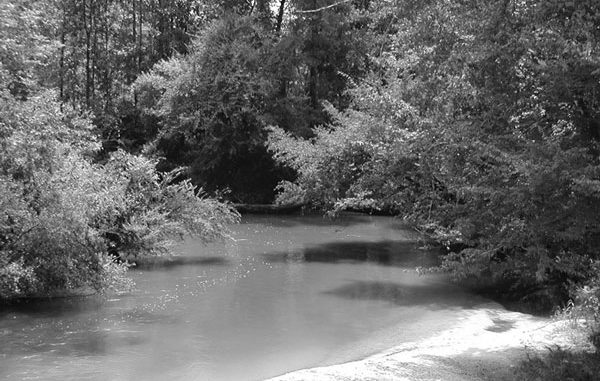
Many hunters feel binoculars are an essential tool in the deer woods. Here’s how two successful hunters make the most of their optics.
A short cast upstream, accompanied by a quick mend, placed the popper against the opposite bank, deep in the shade of an overhanging brush. The mend gave the fly at least a few seconds of a drift-free float.It was kind of strange the way the bass hit that popper. She rushed out from the bank causing a wake, only to suddenly disappear. Then as the popper began to drift into the current, there was this big slurp, and it was sucked under.
My first thought was “bluegill,” but the power with which the fish dove to the bottom and stayed there convinced me otherwise.
A minute later, the bass came back to the surface, jumped a couple of times, and finally succumbed to the net. Not a large one, but then again, any size redeye spotted bass is a worthy adversary.
This was just one of several memorable moments I’ve had wading the Pushepatapa Creek near Varnado during the cool days of October. The beauty of the stream, as the leaves change color, is surpassed only by the willingness of its inhabitants to eat flies.
Unfortunately, the river itself may soon be a memory.
Mankind is drawn to water. Those who are destined to become flyfishers are drawn to moving waters, particularly rivers and creeks that are amiable to wading and paddling.
What our state lacks in rocky streams inhabited by trout or smallmouth bass, we make up for in sandy creeks where spotted bass are king.
Simply look at a topo map, and wherever you find hills, you’ll find these waters.
The Amite and Comite rivers near my home are prime examples. For years, they were my favorite destination for late-afternoon trips in the fall. The spotted bass were spunky and sassy, and quite anxious to eat olive and black woolybuggers, or an occasional popper.
Several years ago, access was cut off by landowners for several reasons. Mainly, fear of liability lawsuits and a failure of local governments to regulate the areas for trash and alcohol.
Like many sandy streams, the Amite and Comite are both designated “wild and scenic” by the state. Don’t confuse this designation with what 48 other states do with such waterways, or you’ll be greatly disappointed.
Rather than buy access areas, develop them for public use and set rules and regulations, our city and state leaders believe that “wild and scenic” is for the birds. That is, if you’re a bird, you can enjoy them. People need to stay out.
Wild and scenic rivers are supposed to have some protections afforded by law, but nothing is guaranteed as long as the Corps of Engineers and greedy politicians exist.
Despite its designation, there are plans to put a dam across the Pushepatapa.
I was sent this letter from Rory Schwegman, a landowner on the Pushepatapa, that pretty much says it all:
“I was wanting to let you know a little about the reservoir plans. I own land on the creek, and have a lot of friends and family that will lose their homes, land, and cemeteries if it happens.
“We are trying to fight it. We have been calling anyone who will listen. The main reasons they want it is to sell water and build homes out of the reach of most in Washington Parish. [There are] several species of endangered wildlife and plant life that grow on the creek.”
The Pushepatapa is not alone. Other streams are also being considered for dams, including Six Mile Creek in Allen Parish, one of the most popular canoeing waters in the state.
This brings back bad memories of the Little Tennessee River three decades ago. Proclaimed “the Madison of the East,” the Lil’ Ten was 30 miles of magnificient dry-fly water, stuffed with big rainbow and brown trout, and home to many rare and indigenous plants.
A proposed TVA dam brought anglers, ranchers, farmers and environmentalists together in opposition. The politicians won, and the Little Ten was flooded.
In a bizarre twist, a liberal Democratic congressman won support for the dam by painting mostly conservative farmers and fishermen as environmental wackos trying to protect the lowly snail darter.
Every stream is a jewel. When it’s gone, it’s gone forever. Not all dams are bad. But each must be judged by these criteria: Does it provide benefits to the general population, does it benefit wildlife, and does it enhance the nature of the area?
The Pushepatapa project passes none of these criteria. In fact, biologists tell me the lake itself would be of poor fishing quality compared to the current stream.
Those who would like to help the efforts to stop the reservoir are encouraged to contact “Save the Pushepatapapa” at (985) 732-7660 or (985) 732-2107.


